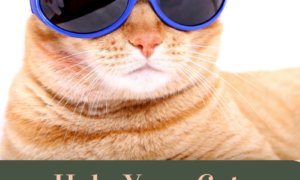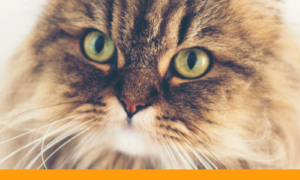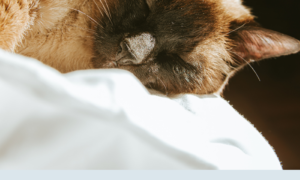Pet obesity is becoming a serious problem. The latest statistics show at least 58% of cats in the U.S are overweight or obese! Some illnesses in cats related to obesity include: Diabetes, arthritis, high blood pressure, and asthma. With these statistics, pet obesity prevention is becoming a priority.
DIsclosure: This post contains affiliate links. We receive a small commission on goods purchased via these links, at no additional cost to you.
How To Determine Pet Obesity
The easiest way to tell if your cat is obese is to check his body by standing over him. Cats at a healthy weight have a slight inward tuck between ribs and hips, comparable to our waistline.
You should be able to stroke your cat’s side and be able to feel his ribs. If you can look at him and count the ribs, he’s underweight. If there is a layer of fat that makes it impossible to feel the ribs, your cat is overweight.
Once you determine your cat is obese, there are changes you can put in place to help your cat lose weight. Here are five tips for pet obesity prevention in cats:
Note Cat’s Daily Food Intake
Pay attention to your pet’s daily food intake, including all those treats given here and there, and then reduce that amount by 25%.
Feed High Protein, Low Fat
Choose foods high in protein and fiber and low in fat. Experts recommend at least 30% protein in a cat’s diet. Kibble tends to be higher in carbohydrates than canned food.
Incorporating canned food into your cat’s diet will lower the carbs and add more water consumption for your cat, a win/win!
Stop “Free Feeding”
If you leave food out for him and continually refill the bowl when it looks low, it is difficult to monitor exactly how much food is being consumed.
Look at the recommended portion size shown on the food can or bag for your cat’s weight. Do NOT give more food daily than the recommendation! If free feeding works better with your schedule, put just the amount for the day in the bowl, but don’t add any more food to it until it’s time for the next day’s portion.
Limit Treats
It’s easy to reward good behavior with treats, but limit it to one or two treats a day and consider healthier options, such as dehydrated salmon.
Treats are special, and should be treated similarly to dessert. Imagine eating as many desserts each day as number of treats you give your cat. Think about how much weight you’d gain at the end of a month!
Pump Up Activity Level
Above all, remember to indulge in daily activity and playtime. Schedule daily play sessions with your cat. Many cats love wand toys. Have 2-3 wand toys to alternate so your cat doesn’t get bored. They give cats an opportunity to practice their hunting skills, and gets them moving.
My cat Marty likes toys he can bat around, so if that’s your cat’s preference, give him a new catnip mouse or ball that he can bat and chase. Make exercise fun!
For cats that eat kibble, introduce a puzzle toy that encourages your cat to hunt for his food rather than simply eating from the food bowl. Puzzle toys provide mental stimulation and give your cat some exercise.
Nala’s Story
One of my catsitting clients, Nala, was obese and in danger of developing serious health problems. Her people would put her food in the bowl, Nala would quickly gobble it up, then go after her kitty brother Oliver’s meal.
Oliver was often stressed and would gobble his food so he got it before Nala showed up. He would get sick from gobbling food, and Nala became larger and larger.
I suggested the PetSafe SlimCat puzzle toy for her and she took to it immediately. This toy is adjustable so you can set it to adjust the amount of food dispensed, upping the difficulty as your cat becomes more savvy. It’s a game that provides Nala with mental stimulation, gives her exercise and slows down her eating. Oliver can now relax and eat his food without gobbling and getting sick. Mealtime is now much more enjoyable for both of them!
Pet obesity prevention will help your cat live a longer and happier life. Before starting a weight loss program for your cat, check with your veterinarian. For cats, it’s important they lose weight gradually. If the loss is too rapid, cats can develop fatty liver syndrome. This condition develops when the liver is forced to process large amounts of stored fat to provide energy to the body. Your veterinarian can help develop a plan that will ensure your cat loses weight safely.
Also, when increasing exercise, start slowly and gradually increase the length and intensity of play sessions. This will prevent putting too much stress on your cat’s body too soon.
Getting a handle on pet obesity will go a long way toward helping your cat live a longer, healthier life.







Great post!
We stopped free-feeding a long time ago. Because it wasn’t working. They ate everything within the first 30 minutes, and kept asking for food for the rest of the day!